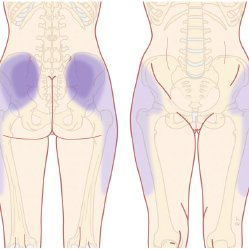Yes! Chiropractic is a great non-surgical, non-drug treatment option for disc herniations and the associated symptoms including low back pain, sciatica, radicular pain, stenosis, and radiculopathy.
What is a disc herniation?
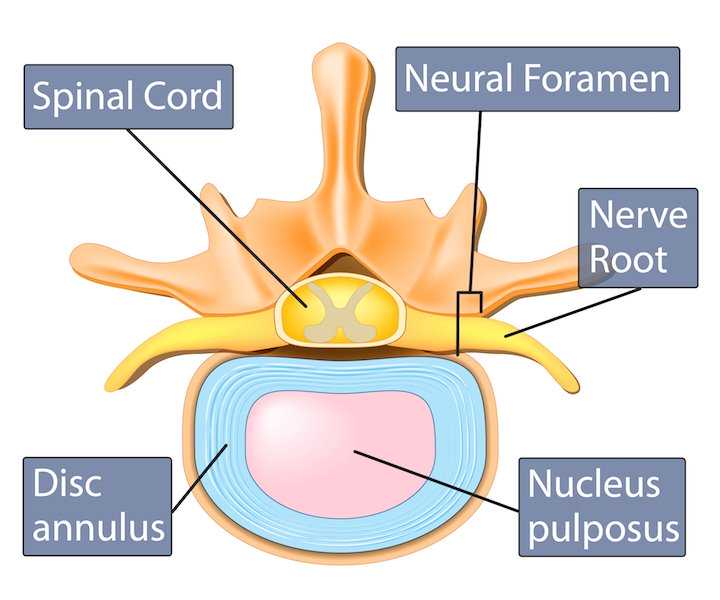
A disc herniation is displacement of discal material outside the vertebral margins. Discs are the gel-like shock absorbers of your spine made of a nucleus pulposus in the middle surround by an annular fiber exterior. Think of the gel like structure of the disc like crab meat rather than a jelly donut. When discs degenerate, herniate, bulge, or fissure, pain may be the result.
However, people without back pain can have disc herniations so it is important to have a trained healthcare professional determine when you may be suffering from disc pain. Looking at the chart below we see that imaging findings are common in asymptomatic (pain-free) individuals.
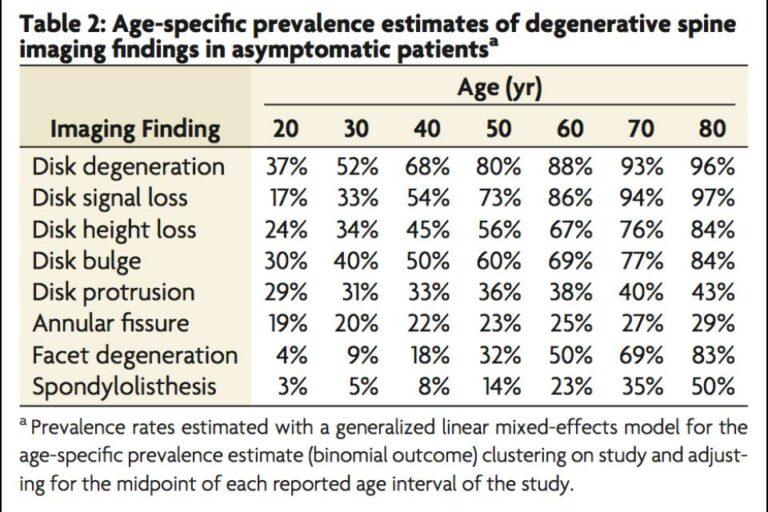
Types of Disc Herniations
It is important to recognize there are many types of discs herniations, each presenting uniquely in the clinic and on imaging. This classification system is meant to help health professionals communicate but oftentimes it can scare or confuse patients. Each type of disc herniation can behave in unique ways and have different recovery timelines. Ultimately, our sports chiropractic approach is looking for mechanical components to help control symptoms while creating an environment of healing. Because guess what…Disc herniations heal!
Disc Bulge – a disc bulge is not technically a disc herniation. Perhaps you could think of it as a “baby herniation”. The displacement of discal tissue is not dramatic enough to be considered a herniation but is still technically outside the margin of the disc space.
Disc Degeneration – think of this as aging of the disc. Changes to the disc may involve disc height loss and signal loss based on the changing structure. If you look at the chart above, you will see that disc degeneration is present on MRI in half of the people in their 30s and continues to climb until 93% of people in their 70s. Disc degeneration is a normal part of the aging process of the disc.
Annular fissure – involves the separation of the outer layers of the disc from each other and from the bone. Remember the disc is firmly attached to the vertebral bone, above and below. This is why discs cannot slip!
Disc Protrusion – disc displacement beyond the outer annulus by the disc material but broader and more contained.
Disc Extrusion – Disc displacement beyond the outer annulus by the disc material. Like a disc protrusion but the discal material is uncontained.
Disc Sequestration – internal material from the nucleus pulposus has migrated beyond the outer limits of the annulus and broken free. Sequestration is a sub-type of disc extrusion.

What about a slipped disc?
Discs do not slip! I repeat, Discs do not slip. The intervertebral disc is firmly attached to the vertebra above and below via the annular fibers that we discussed.
The commonly used term “slipped disc” is an oversimplification. I prefer not to use the term because it connotates fragility like your discs can pop in and pop out. Just like joints, that doesn’t happen.
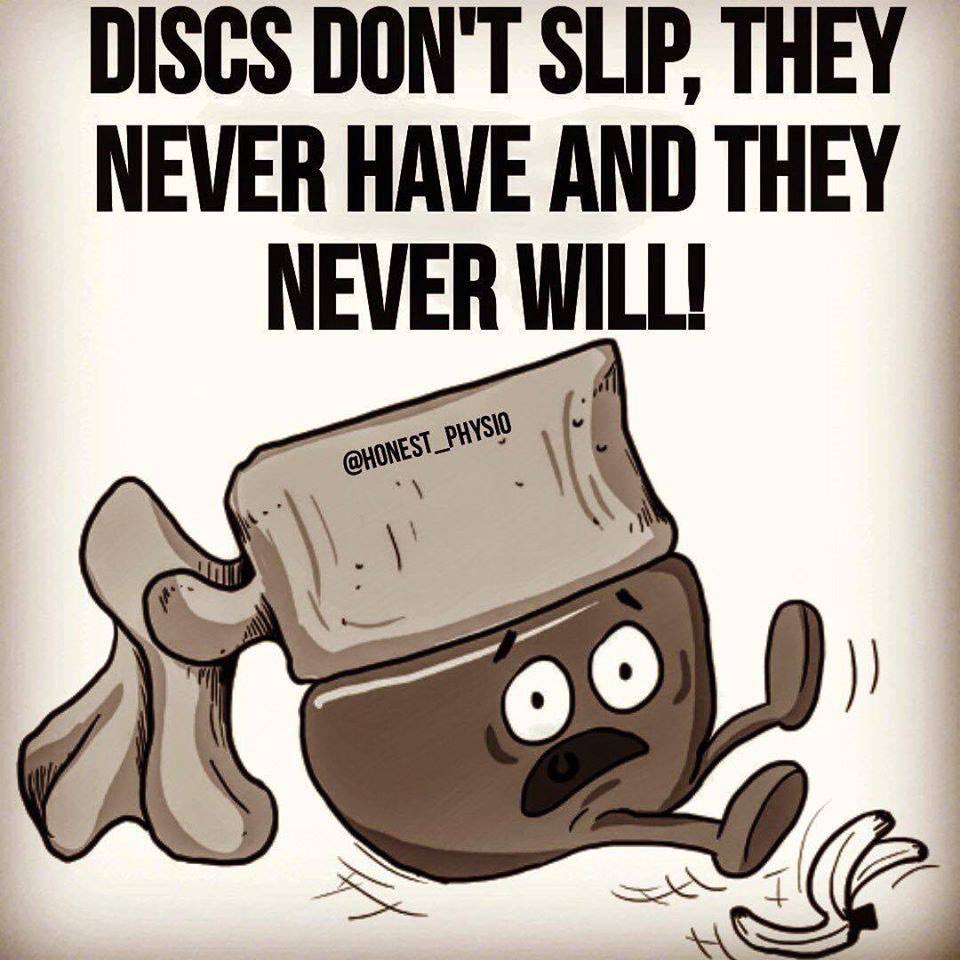
Do disc herniations heal?
A high percentage of patients suffering from lumbar spine disc herniations heal in 4-6 weeks. Because of this favorable natural history, early imaging and invasive treatments are not recommended prior to 6 weeks.
In fact, 90 percent of lumbar disc herniations will resolve on their own.
Gugliotta, M. BMJ OPEN 2016;6:e012938
Spine surgery has been shown to provide short-term benefits for pain duration but there is no difference in long-term benefits compared to conservative care.
Conservative / Non-Operative treatment may involve a combination of the following:
- Chiropractic
- Physical Therapy
- Anti-inflammatory Medications
- Steroid Injections
- Pain medications
If symptoms persist, lumbar spine discectomy is a minimally invasive surgical option.
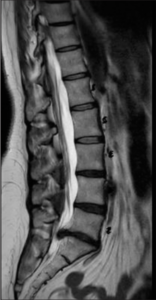
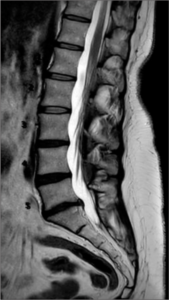
Magnetic resonance images pictured are from a case report of a patient suffering from lumbar disc herniation. They were taken three months apart and show the resorption of the L5 disc with conservative, non-surgical treatment.
Does Disc Herniation Size Matter?
Even large herniations and sequestrations can heal.
The size of the disc herniation does not predict what patients will fail non-operative treatment and require surgery.
Not only does the size of the herniation not matter when determining what patients will fail conservative measures, but it also it a poor indicator of pain. As discussed in previous posts about pain, our body has an incredible ability to adapt.
Disc Herniations and Sciatica
The most common cause of sciatica is a lumbar spine disc herniation. Local disc herniation results in inflammatory mediators that irritate the nearby exiting nerve or nerve root resulting in symptoms in the back of the thigh. These symptoms could be pain, numbness, and tingling.
If you are feeling pain, numbness, and tingling in the back of the leg, the most common cause is lumbar spine disc herniation, not a pinched nerve. Just like a slipped disc, a pinched nerve is an oversimplification that often scares people away from moving, delaying their recovery.
Many patients we see with sciatica get great results with in-office treatments and at-home exercises. If you are suffering from disc herniation and sciatica, watch the videos below to see if there is a clear mechanical component and if these movements and exercises provide you with relief.
Our Chiropractic Approach to Disc Herniations
Any patient that comes to our clinic starts with an initial assessment. Dr. Jace Peters is skilled in thorough history taking to help uncover if your pain is discogenic in nature.
From there, our approach is simple, calm down symptoms associated with the disc herniation with movements, exercise, and hands on treatment. We educate patients on spine sparing movements to relieve symptoms and then give them the exercises to perform at home and work while their disc herniation heals.
From a history and physical examination, we try to solve your disc problem with movements and exercises. It may seem scary to move and exercise with the amount of pain accompanying your disc herniation, but we have helped hundreds of people with disc herniations this exact way.
Dr. Peters looks for a mechanical component to uncover a directional preference. Oftentimes, patients with disc injuries or herniations respond extremely well and quickly to extension movements to the lumbar spine. We use a series of repetitive movements and sustained postures to find what movements patients respond best to and then get them involved in their treatment outside the clinic.
After calming down the symptoms, we work to get you back to the movements you have lost. Whether that is sitting pain-free at work, driving to your kid’s activities, or working out at the gym.


